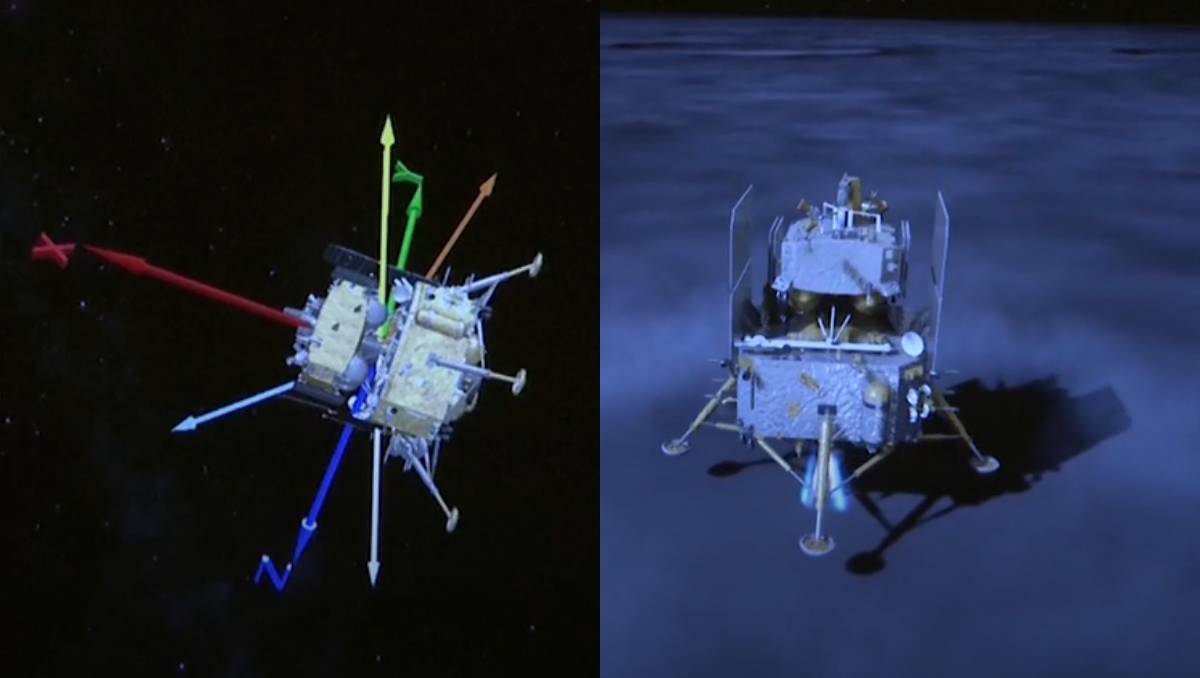The China National Space Administration (CNSA) announced that China’s Chang’e-6 mission made a touchdown on the South Pole-Aitken Basin of the moon.
Table of Contents
Chang’e 6 Mission
The Chang’e-6 mission is the first robotic mission to collect samples and return from the lunar far side, according to CNSA officials.
Chang’e 6 lifted off on May 3 from the Wenchang Space Launch Site in the Hainan region of southern China. It traveled to orbit and then to the lunar surface on a Long March 5 rocket. Following a five-day journey to the largest satellite of Earth, the probe engaged in an engine burn that started at 10:12 p.m. EDT on May 7 (0221 GMT on May 8), reducing its speed to the point where the moon’s gravity could take hold of it.
A small moon rover and other scientific experiments are also being carried out by Chang’e 6.
Diagram showing the various phases of the Chang’e 6 lunar sample-return mission. (Image credit: CNSA)
Mission Success and Highlights
After taking off, Chang’e 6 spent roughly four days in lunar orbit. It carefully examined its intended landing spot over the following few weeks and prepared for today’s major event, which went as planned: The mission’s orbiter, complete with its associated Earth-reentry module, continued to circle the moon after Chang’e 6’s lander gently touched down in Apollo Crater.
Over the following three days, the lander will examine its surroundings and gather roughly 4.4 pounds (2 kilograms) of rock and dirt from the moon. Using Chang’e 6’s onboard drill, some of these samples will be taken from the surface, while others will be extracted from as deep as 6.5 feet (2 meters) below the surface.
Then, a rocket that descended with the lander will send this material into lunar orbit. On June 25, the sample container will descend through the parachute after meeting up with the Chang’e 6 spacecraft and beginning its lengthy journey back to Earth.
The recovered material will be thoroughly examined by scientists in an effort to learn more about the origins and development of the moon as well as the reasons behind the stark differences between its near and far sides. For example, the black volcanic seas known as maria are frequent on the near side but uncommon, for unknown reasons, on the far side.
Scientists will undoubtedly evaluate the material from Chang’e 6 with the samples that Chang’e 5, which descended to Earth in December 2020, acquired on the moon’s near side.
Additionally, assuming everything goes as planned, Chang’e 6 will create more history for China: The mission’s goal is to gather samples and return them to Earth so that scientists may examine material from the far side of the region of the moon up close for the first time.
Credit: Space.com | footage courtesy: China Central Television (CCTV)| edited by [Steve Spaleta]
Chang’e moon program and future mission
In 2007 and 2010, Chang’e 1 and Chang’e 2 launched orbiters to the moon, respectively. Chang’e 3, which landed a lander-rover pair on the near side of the moon in late 2013, was China’s first mission to reach the lunar surface. Early in2019, Chang’e 4 made a comparable pair on the far side. In order to demonstrate the technology needed to safely bring lunar samples to Earth, Chang’e 5-T1 launched a test capsule around the moon and back to Earth in 2014. Chang’e 5 followed suit in late 2020.
There are still missions to do. Chang’e 7, which is expected to carry substantial water ice reserves, is slated to launch in 2026 with the goal of evaluating the moon’s south polar region’s resource potential. Two years later, Chang’e 8 will launch and explore on-site uses of such materials, including as constructing a building out of rock and earth from the moon.
If all goes as planned, all of this robotic work will culminate in something even more significant: crewed lunar expeditions, which China hopes to begin launching by 2030. With assistance from allies like Russia, Belarus, and Pakistan, the country hopes to construct the International Lunar Research Station, an astronaut outpost close to the south pole, sometime in the 2030s.
